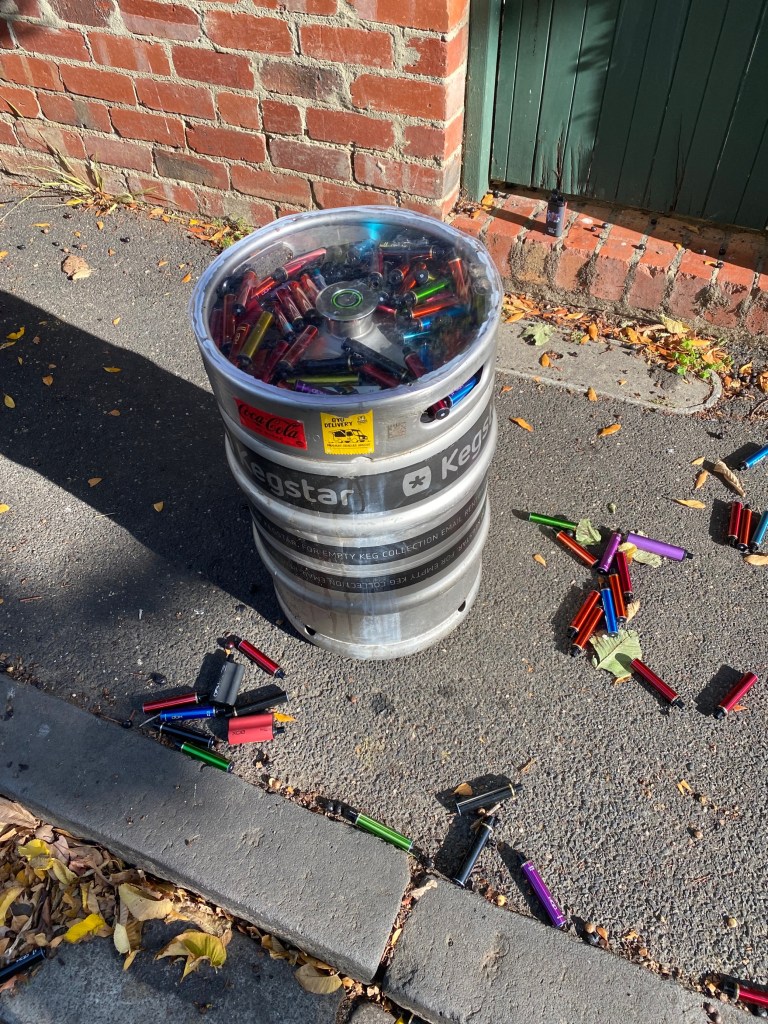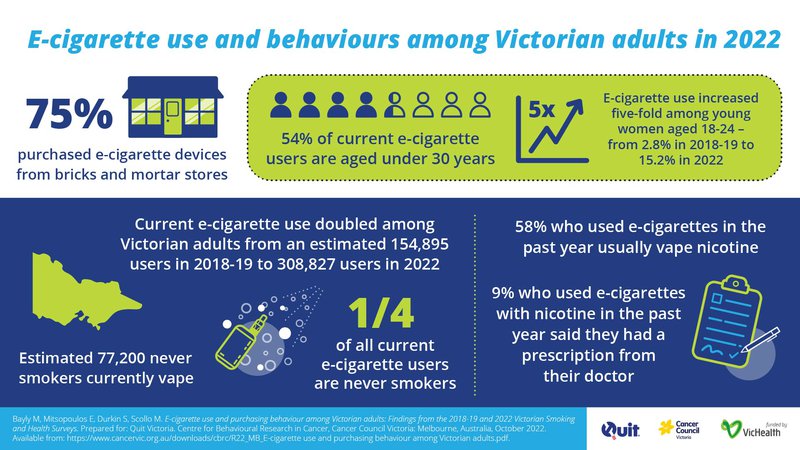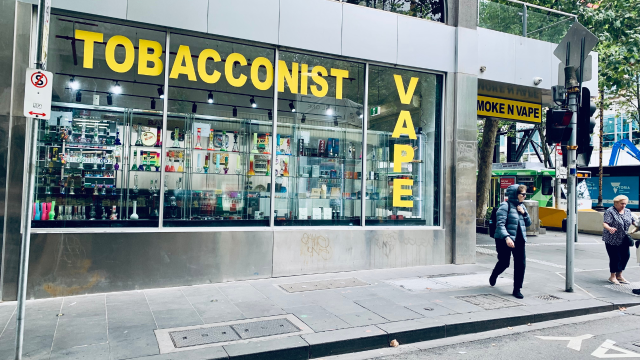
The Albanese government has been cracking down on e-cigarettes, with more laws released regarding the selling and distribution of cigarettes. Thankfully, this decision has an immense amount of support, with around 83% of Australians backing stricter regulations on the sales of e-cigarettes.
There are a variety of factors behind this. The first is the impact vaping has on an individual’s health, and the other is the incredible environmental toll disposable vapes have, from single-use plastics to lithium batteries and valuable metals carelessly disposed of. It’s no surprise that vaping has such a staggering litter rate. There’s also no sustainable way to dispose of them, thanks to the chemicals found within a vape.
Because of this array of poisonous chemicals, the medical community has been the driving force behind stricter regulations, seeking to debunk a lot of misinformation about vapes being less addictive and harmful than cigarettes. Due to the multiple candy-flavoured options, and easy access, vapes became popular among younger generations.

Some of the largest tobacco companies have been investing heavily in e-cigarette products for years. The crackdown on vapes isn’t a form of moral panic, it’s an attempt to stop the resurgence of the tobacco industry and to prevent an escalating health crisis.
Vapes come loaded with dangerous chemicals, two of which are called propylene glycol and glycerol which make up most of the e-liquid (aka vape juice). These e-liquids usually contain highly addictive nicotine and a mix of flavouring chemicals. They may also contain coolants, which are the chemicals that produce that cooling sensation in the mouth when you inhale the aerosol.
E-liquids have also been found to include toxic contaminants, such as arsenic, heavy metals, and chemicals such as formaldehyde, which is used for preserving dead bodies.
So far, there have been 42 chemicals found in e-cigarettes that are known to cause damage to your lungs and airways. While these chemicals are present in low amounts, the long-term exposure to these is still up for speculation within the medical community, with many saying the risk is too big to gamble on.
Quit Victoria has put together a list that collates the chemicals and their correlated use in other products:
- Allyl alcohol is found in common household cleaning products and disinfectants
- Acrolein is a dangerous poison commonly found in weed killer
- Acetonitrile is commonly found in lithium batteries and car exhausts
- Alpha-Pinene is a type of chemical found in turpentine (paint thinner)
- Arsenic is a highly poisonous chemical historically used in rat poison
- Benzene is a highly toxic chemical found in gasoline and pesticides
- Cadmium is a toxic heavy metal used in batteries
- Chlorine is found in bleach
- Formaldehyde is commonly used to preserve dead bodies
- Glyoxal is used as a strong disinfectant and has also been used in bug killers
- Lead is a dangerous toxic metal found in aviation fuel, ammunition and batteries
- Toluene is a clear, colourless liquid found in fuel
- Xylene is used in paint strippers and petrol.
This all feels a bit familiar. I remember being in primary school and being shown images of a cigarette, breaking down all the toxic chemicals inside it. From lead to acetone. The imagery was stark and it confused a young me as to why anyone would start smoking.
In 2012, the biggest fight for tobacco regulation was plain packaging, highlighting the devastating health impacts of smoking and making the general public come to terms with the impacts of long-term smoking. We’ve all seen those graphic images of oral cancers, clogged arteries and damaged lungs slapped on a packet of cigarettes somewhere. Governments are having to fight this battle with tobacco companies again, but now against chemically enhanced flavours and colourful devices.
“E-cigarettes might seem innocent and appealing, but the truth is they contain poisonous chemicals – the same as those in biofuel, paint thinner and bug killer. It’s time to see through the haze, get the facts on vaping” https://t.co/qHDfA55hwo
— Quit (@quitvic) May 28, 2023
I’ve seen plenty of friends and family who swore off cigarettes due to the smell and addictive aspects pick up vaping because it was trendy, and now they’re struggling to put down the vape. E-cigarette addiction has even become a topical meme with Gen Z on TikTok, with many parodying hiding a vape from someone, and being scared of the user’s aggressive nicotine withdrawal symptoms.

New data has shown that 54% of new vape users are below the age of 30, with 75% of purchases made at brick-and-mortar stores. A report released last year by the Cancer Council showed damning data, revealing nearly 80,000 adults in VIC who’d previously never smoked took up vaping in the past three years.
Thankfully, there are movements happening to make vapes harder to obtain, stopping the import of e-cigarettes at the Australian border, including banning disposable devices and limiting access to prescription only for people trying to quit smokingThere are also tons of resources out there to help people quit.
If you are struggling with quitting vaping, or know someone that is trying and would like to help them, consider contacting Quitline on 13 7848, visit the Quit.org.au website to use live chat, request a callback or text or visit or jump online using Facebook Messenger (QuitVic) to find support in quitting. Counselling is 1:1, free and supportive. You can find more information about vaping and its negative health impacts here.

Leave a Reply
You must be logged in to post a comment.